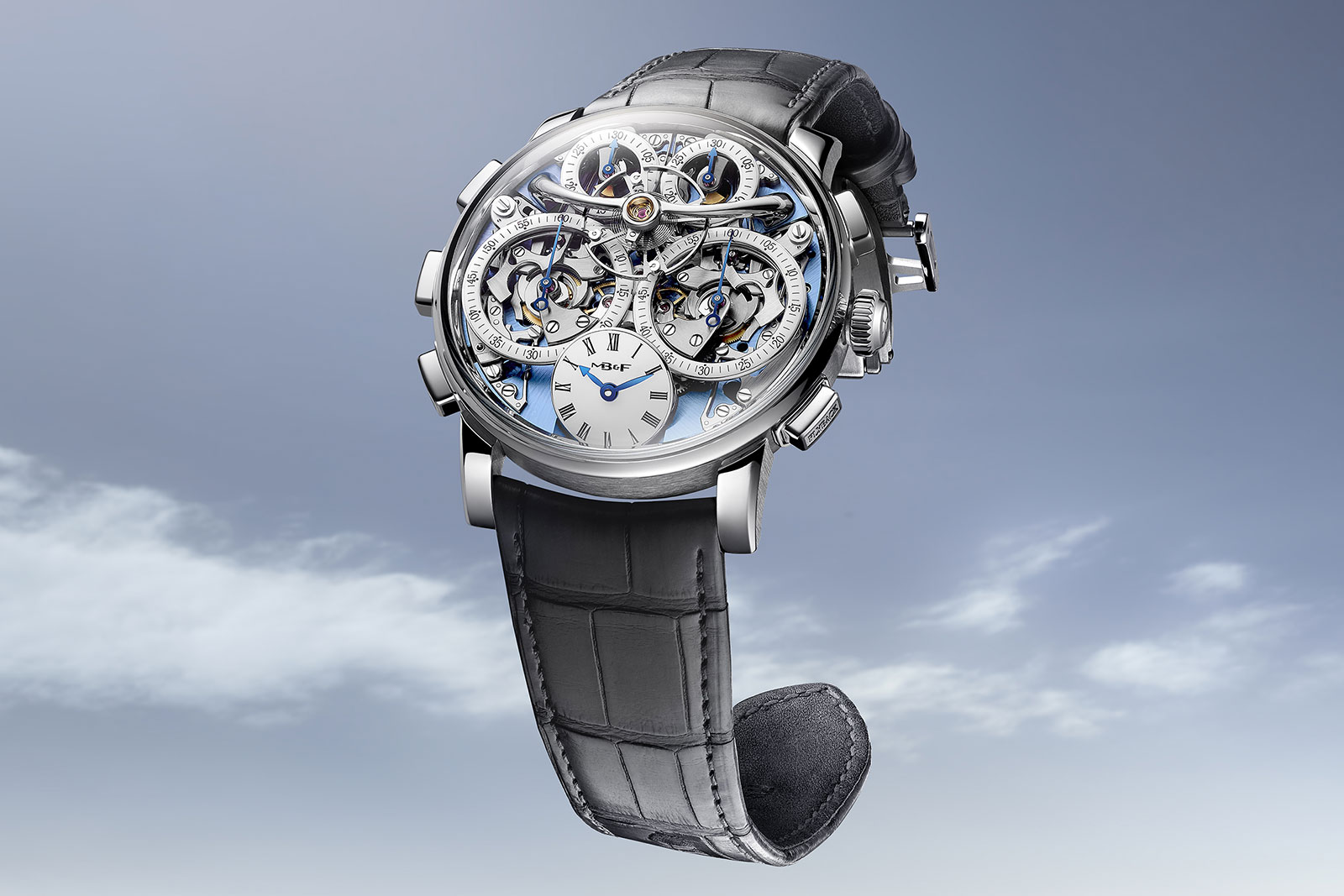The MB&F LM Sequential Upgraded with a Flyback
The supercharged chronograph, now with a flyback.
In 2022 MB&F launched its first ever chronograph, the LM Sequential EVO. A twin-chronograph constructed by Stephen McDonnell, it was a clever reinterpretation of the split-seconds function. Today MB&F upgrades the concept with the LM Sequential Flyback Platinum that boasts a revised movement incorporating an additional flyback function.
Initial thoughts
The LM Sequential Flyback is certainly polarising in terms of style and technique, like most MB&F creations. The original Sequential EVO was praised for its exceptional and creative movement construction, though the utility of the twin chronograph was debated. The LM Sequential Flyback now adds a flyback function to the package, which may seem excessive.
But that misses the point: the question of utility needn’t be answered nor asked. Such a timepiece goes far past the realm of practicality and needs to be judged simply by what it is: an incredible concept painstakingly executed.
We already explored in detail how Mr McDonnell implemented the Twinverter system of double chronographs mechanisms while making the complex movement chronometrically-potent, despite the obvious challenges. I recommend reading the original story, as it thoroughly explains the beautiful mechanical subtleties of the watch.
In the original Sequential EVO, the layered and complex construction of the movement meant the flyback function couldn’t be reliably implemented. Mr McDonnell ultimately dropped the idea and focused on perfecting the rest of the movement instead.
Two years (and surely a great deal of prototyping) later, the Irishman finally found the suitable formula, making the MB&F chronograph whole. With a case in platinum, the Sequential Flyback is undoubtedly hefty, but also mechanically dense.
Two plus one
The Flyback movement is heavily based on the original LM Sequential caliber. The McDonnell-constructed calibre basically joins two separate going and chronograph trains with one common escapement. The mirrored chronographs can work independently, just like a conventional one would, or they can be operated simultaneously.
A clever mechanism dubbed ‘Twinverter’ makes actuating both chronographs at the same time possible. It works as a sort of binary logic gate, which depends on the chronograph trains’ state. If both chronographs are stopped or running, the Twinverter starts or respectively stopes them both. If one chronograph is running and the other is stopped, the Twinverter switches their state, stopping one and starting the other simultaneously.
The LM Sequential Flyback adds a flyback to the many existing chronographs functions. Invented sometime in the 1930s for pilots, the flyback is an instant reset and restart function: it stops, resets and restarts the chronograph in one seamless sequence with a single press of the reset button.
In a normal chronograph, the user would have to stop, restart and then start the chronograph again by operating both pushers. With a flyback chronograph, the user only has to once press a dedicated pusher (usually the reset pusher performs double-duty as a flyback pusher as well). This allows for accurate recording of separate events in quick succession. Historically it was used for leg timing by pilots for navigation in an era before GPS.
Such a system requires some extensive tweaking of the chronograph’s operating levers and hammers, so they can accommodate the additional operation. Mr McDonnell envisioned a flyback as a part of the LM Sequential EVO from the start, and he even got to the prototyping stage, but only with a single flyback in the left-hand chronograph train.
The LM Sequential Flyback, of course, has flyback functions on both chronograph trains.
Apart from the subtle technical addition of a flyback function, the new chronograph went through some design tweaks as well, giving it a more refined look than the original, which was substantially more sporty.
The case is platinum and measures 44 mm in diameter. Like some earlier Legacy Machine models, the case evokes vintage watches with its curved lugs bevelled along their edges. The case features five pushers, all polished, with the lower two on each side bearing “Flyback”.
The open-worked dial was similarly facelifted. The EVO featured flat black sub-dial rings clearly designed to be functional, with the chronograph works taking centre stage. Here the register scales are finished in glossy white lacquer that resembles fired enamel.
The time-telling miniature dial at six o’clock is now angled towards the user, which not only enables time reading but also visually separates the timepiece’s indications.
The domed sapphire crystal is filled up nicely by the angled sub dial and the trademark raised balance wheel. The movement beats at a leisurely paced 3Hz rate, with the big free-sprung balance featuring a pleasantly prominent Breguet overcoil.
Most of the chronograph works are laid bare and exquisitely finished, as is tradition with the Legacy Machine series. The various polished and brushed steel components contrast well with the “sky blue” base plate. According to MB&F, the colour is a nod to the history of the flyback function, since it was invented for aviation.
On the back, the movement is slightly more orthodox than the front. A keen observer can make out the twin barrels and going trains. The two barrels run in parallel to ensure a 72 hour power reserve.
Like other Legacy Machine, the movement has several classical elements mixed into the modern construction, making for an overall traditional aesthetic. The dark grey bridges are bevelled and decorated with Geneva stripes. Many jewels sit in golden chatons. The visual highlights are two abnormally large minute counter wheels.
Key Facts and Price
MB&F Legacy Machine Sequential Flyback Platinum
Diameter: 44 mm
Height: 18.2 mm
Material: Platinum
Crystal: Sapphire
Water resistance: 30 m
Movement: Chronograph movement developed by Stephen McDonnell
Functions: Hours, minutes, power reserve indicator and twin flyback chronograph function
Winding: Hand-wound
Frequency: 21,600 beats per hour (3 Hz)
Power reserve: 72 hours
Strap: Alligator leather strap with white gold folding buckle
Limited edition: 33 pieces
Availability: At MB&F retailers and MAD Galleries
Price: US$218,000 before taxes
For more, visit MBandF.com.
Back to top.